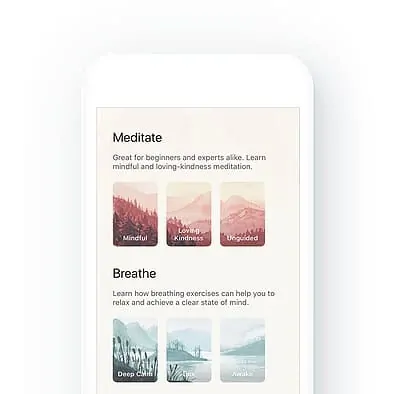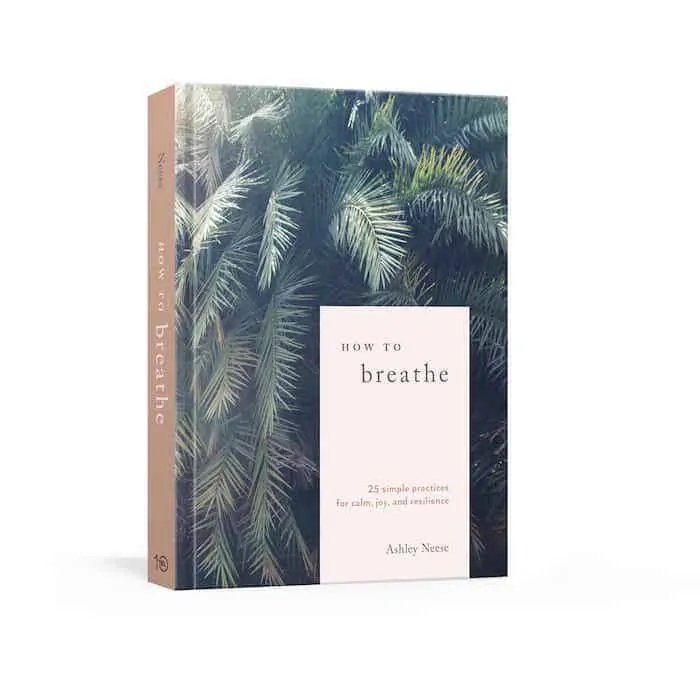
The Best Breathing Techniques
YOU MAY THINK YOU KNOW HOW TO BREATHE BECAUSE IT’S AN AUTOMATIC PROCESS, BUT MORE MINDFUL BREATHING TECHNIQUES HAVE A WEALTH OF HEALTH BENEFITS YOU MAY NOT BE AWARE OF.
Breathing is an automatic process handled by the unconscious part of the mind that keeps the beautiful machine we call the body running without us having to think about.
But if that’s the case, what’s with the concept of breathwork? Is this just another alternative wellness fad or are mindful breathing techniques actually worth incorporating into your self-care routine?
In fact, they are. According to Harvard Health, breathing isn’t as straightforward as you may think. Despite it being an innate ability, many people breathe improperly and must relearn this natural skill:
The ability to breathe so deeply and powerfully is not limited to a select few. This skill is inborn but often lies dormant. Reawakening it allows you to tap one of your body’s strongest self-healing mechanisms.
In this guide we provide a simple breathwork strategy made up of three easy breathing techniques. We also share the breathing app we use daily and have added to our minimalist directory for its beauty and utility.
Develop a Healthy Self-Care Routine
Managing your wellness can be confusing and overwhelming, our simple yet holistic guide to self-care can help.
How to Breathe Properly
Within the health and wellness community, deep breathing is considered the proper way to breathe and the most significant benefit is that it increases the flow of oxygen throughout the body.
Of course you would not be able to survive if your oxygen was completely cut off, but decreased levels of oxygen means that you are alive but not fully thriving.
Increasing the flow of oxygen, through the proper breathing techniques we outline below, has an incredible range of benefits. Increasing oxygen through deep breathing does all of the following and much more:
- relaxes the body
- reduces stress
- increases energy
- provides pain relief
- lowers blood pressure
- improves your posture
However, even though we are born with the ability to breathe properly, over time we become conditioned to breathe more shallowly. Harvard Health states:
For many of us, deep breathing seems unnatural. There are several reasons for this. For one, body image has a negative impact on respiration in our culture. A flat stomach is considered attractive, so women (and men) tend to hold in their stomach muscles. This interferes with deep breathing and gradually makes shallow “chest breathing” seem normal, which increases tension and anxiety.
In addition to body image, other forms of fear, stress and anxiety lead to improper breathing that cuts the flow of oxygen and limits its revitalizing effects. These stressors include but aren’t limited to:
- Low confidence
- Fear and anxiety
- Emotional stress
- Illness or disease
- Environmental toxins
- Extreme temperature
- Poor dietary habits
- Noise pollution
All of these are considered mental, emotional or physical stressors that decrease air flow and keep the body tense which, over time, can lead to a host of health issues — from body aches and pains to cardiovascular disease.
On top of that, studies are showing the link between proper breathing cognitive function. The following techniques provide a simple strategy for being more mindful about how you breath.

The Best Breathing Techniques
Have you ever watched a baby breathe, particularly while asleep? This is actually a perfect example of unconscious and unrestricted deep breathing.
Their belly expands and pushes all the way out while the chest rises as they inhale through the nose and allow the lungs to completely fill up with air.
Most breathing exercises are inherently easy as they require little time, no equipment and no cost. However, the three methods below have garnered a reputation for their efficacy.
DIAPHRAGMATIC BREATHING
This is the simplest and most basic breathing technique to incorporate into your self-care routine. Either sitting or lying down, place one hand on your belly and the other on your chest.
Inhale deeply through your nose until you can’t draw in anymore air. As you inhale you should feel your chest rise and your stomach push out.
Hold your breath and keep the air in your lungs for a couple of seconds. Then with slightly parted lips, exhale and completely release all the air you took in. Repeat the entire sequence a few times.
PRANAYAMA BREATHING
Pranayama is the ancient Hatha yoga technique of breath control. Some popular methods, such as the 4-7-8 breathing technique, are based off of Pranayama.
Find a comfortable place to sit or lie down, being mindful of your posture. Rest the tip of your tongue against the roof of your mouth, right behind the top front teeth.
The cycle that you will engage in is similar to diaphragmatic breathing but is much longer. For instance, if you use the 4-7-8 method you will inhale for four seconds, hold your breath for seven seconds and then exhale for eight seconds.
Starting off it may feel a bit difficult to inhale-hold-exhale for long periods, but your body will gradually get used to it. Begin with only one or two cycles then increase over time as you become more comfortable with the method.
Pranayama has been shown to help treat stress-related disorders and improve sleep hygiene, amongst many other benefits.
BOX BREATHING
Box breathing is also called four-square breathing and is known to improve performance and heighten concentration while also helping you manage stress.
Start by sitting upright in a comfortable chair with your feet on the floor and close your eyes. Then breathe in through your nose as you count to four. Be aware of the air filling your lungs.
Next, hold your breath while counting to four again. Afterwards, slowly exhale the air you took in while counting to four. Repeat this series one to three times.
Though most breathing techniques are considered to be safe, it’s always a good idea to check in with a licensed physician or therapist, particularly if you have existing mental, emotional or physical issues.
The Best Breathing App
One of the easiest ways to start a breathing routine is to use an app that provides both guided and unguided sequences that help you build a habit around it.
After experimenting with half a dozen apps, we recommend the Oak meditation and breathing app. It is a minimalist app with a simple, beautiful and intuitive design that helps you practice breathwork with ease.
For the avid breather, you can use their Awake, Mindful and Sleep series to practice morning, noon and night. But even if you only have a few minutes a day, the free Oak app is a great way to easily practice proper breathing techniques.
The Best Book on How to Breathe Properly
For those looking to advance their practice, a gorgeous coffee table book that provides a simple guide to breathing is How to Breathe: 25 Simple Practices for Calm, Joy, and Resilience by breathwork specialist Ashley Neese.
The book introduces you to the foundations of breathwork, provides research-backed benefits and outlines over two dozen breathing techniques for you to choose from.
Images by Aiony Haust.
Affiliate Disclosure: As an Amazon Associate, Minimalism Co earns from qualifying purchases.

